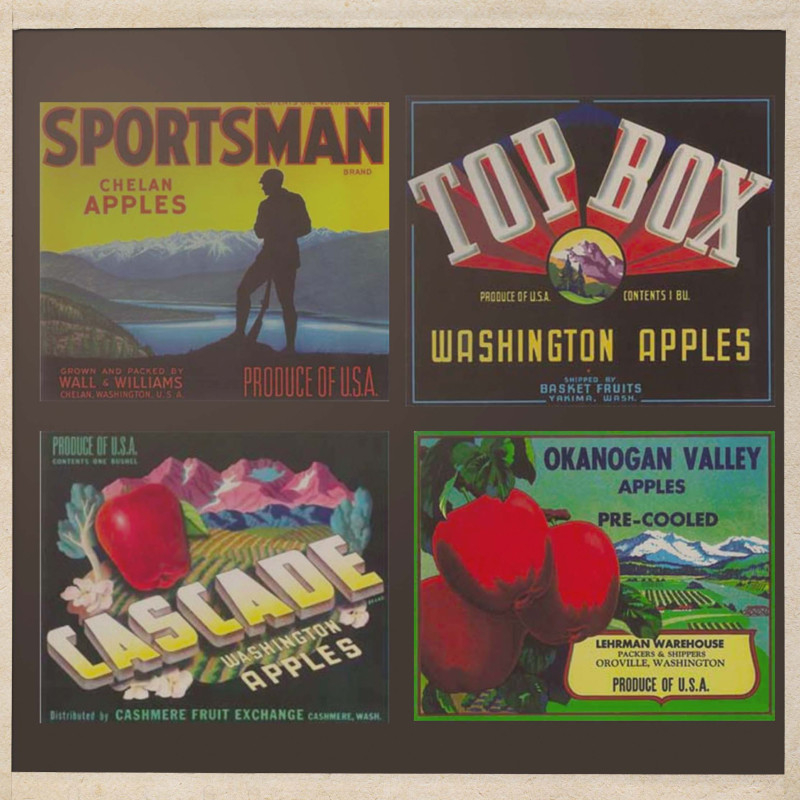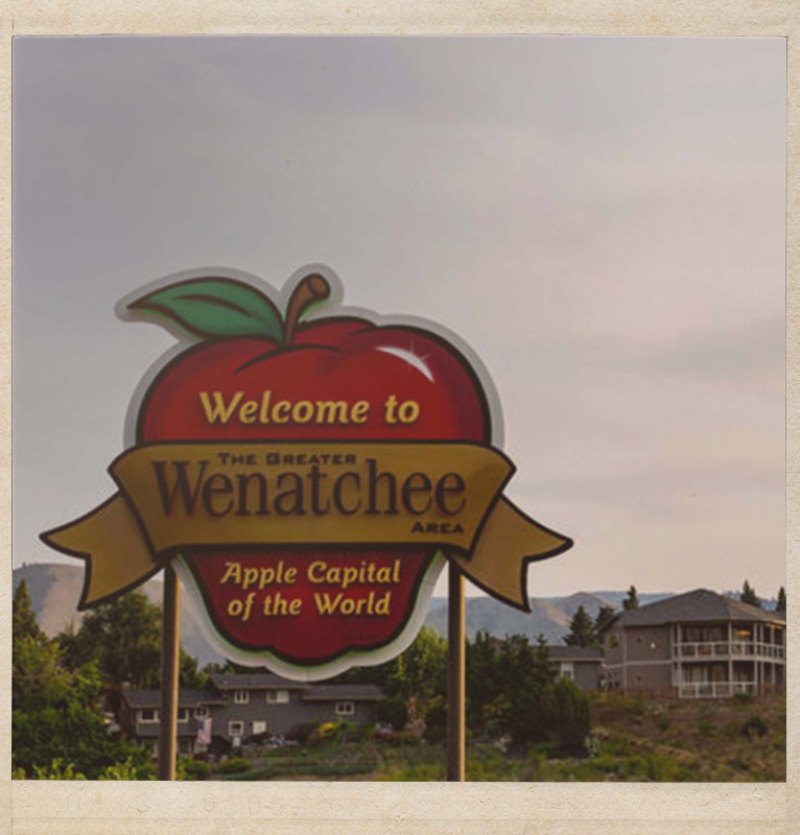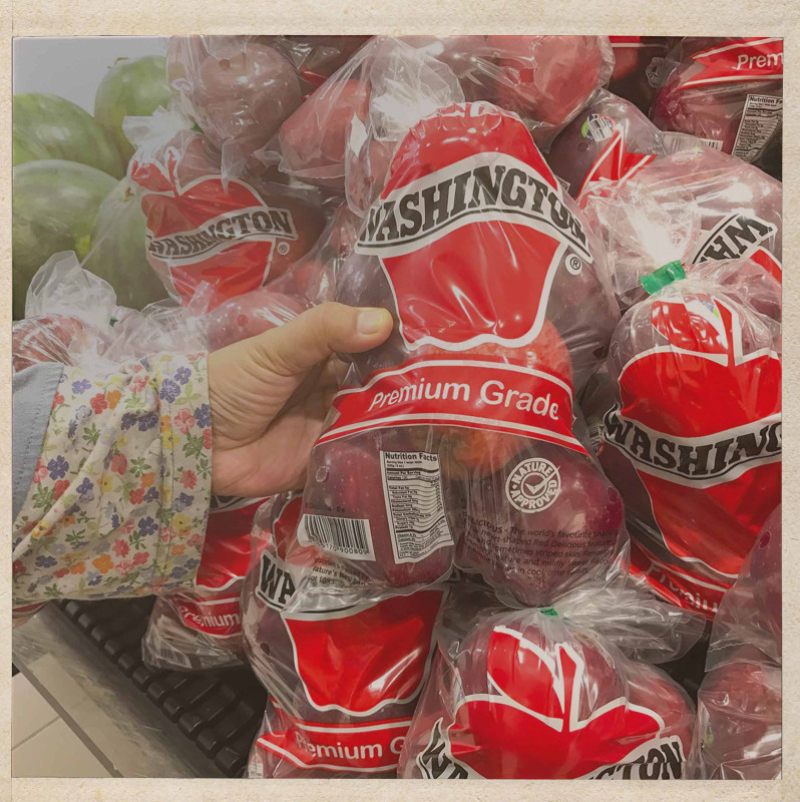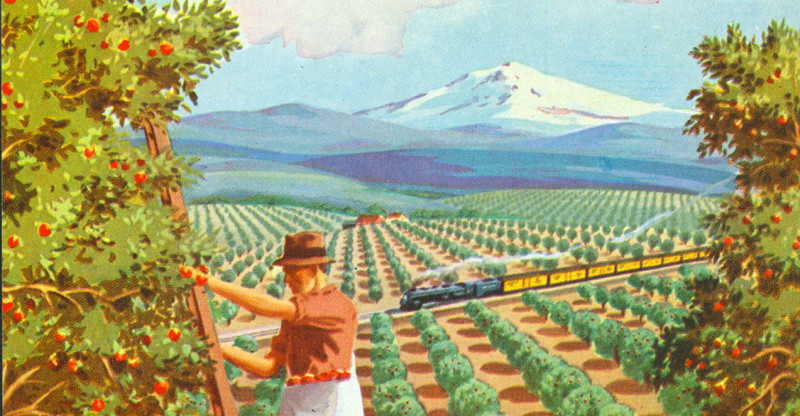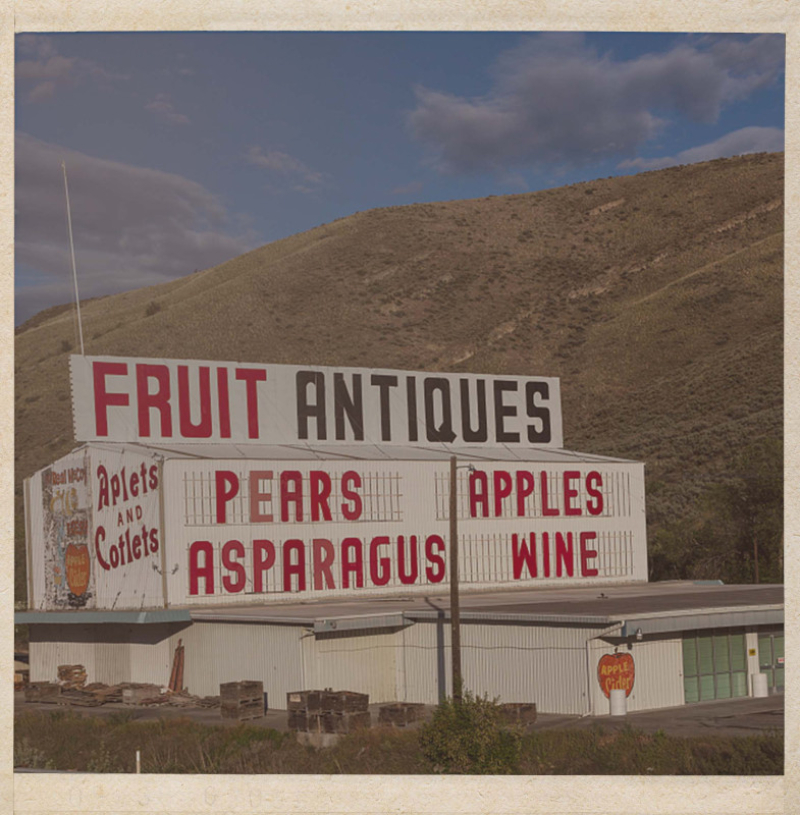Creating an Inland Apple Empire
Washington farmers grow 10 billion apples per year. But before the international reach and acclaim, orchardist in Yakima and Wenatchee put in the work to become the “Apple Capital of the World.”

IT HARDLY SEEMS POSSIBLE that there was a time before Washington was known for The Best Apples on Earth™, but, indeed, all mighty empires must endure humble beginnings.
European settlers considered apples (in all their forms: fresh, cooked, dried, sauced, and cider’d) a key component of civilized society, so they took them everywhere they went. In the mid-1800s, that meant European settlers brought their apple seeds and saplings to the Northwest, by way of the Oregon Trail. For several decades, settlers and their apple trees remained clustered in coastal cities like Portland and Seattle. But by the late 1800s, and with the arrival of the first transcontinental railroad, those cities were crowded, and settlers began flocking further inland to places like Yakima and Wenatchee.
In both of those towns, the apple industry started small, with most orchards smaller than 10 acres. The long, dry summers could be brutal, but farmers soon started to realize that trees planted near the Columbia and Yakima rivers produced exceptional fruit. Anywhere they could find sufficient water, farmers learned that the other growing conditions present made crops grow extremely well.
By the 1890s, farmers literally began to take matters into their own hands, digging irrigation ditches with hand shovels to siphon water from the rivers into their fields. With the precious water reaching more and more acreage, farmers began to plant more and more apple orchards. As before, those trees grew strong and began to produce high quality fruit, noticeably larger and sweeter than the apples grown on the west side of the Cascades. When the railroads connected Yakima to Seattle in 1894, growers were able to ship their fruit to larger markets, and all the conditions were primed for an explosion of growth for apple orchards.
It didn’t take long for advertising initiatives to take root. Wenatchee growers shipped their first rail car of apples in 1901, and by 1902, the city was calling itself “The Apple Capital of the World.” In 1910, when Wenatchee growers produced an estimated 2,400 rail-car loads of apples, each case was accompanied by a brochure referring to Wenatchee as “The Home of the Big Red Apple, Where Dollars Grow on Trees.” One booklet promised “An apple orchard provides as sure an income as government bonds.”
Washington apple growers, in order to send the highest quality fruit to market, packed all their apples in wooden crates, by hand, rather than dumping them into the more prevalent apple barrels. Growers designed beautifully artistic labels for their apple boxes, many of which are now preserved as works of art. Those lithographed labels touted the Evergreen State as “America’s Delight,” “The Fruit Bowl of the Nation,” “Home of the Class-A Apples,” and “The Pride of the North.”
During the 1930s, the recently established Washington Apple Commission began promoting the state’s apple dominance by placing full-page advertisements in popular national magazines like Life and Good Housekeeping. As time passed, their efforts intensified, and by 1960, the commission produced a pamphlet featuring a map showcasing the widespread distribution of Washington apples. These apples found their way into every state, with California, Texas, Illinois, New York, and Pennsylvania emerging as the largest consumers. Notably, the commission’s estimations revealed that the average Texan consumed approximately 38 Washington apples annually.
As the 1960s unfolded, the apple became an iconic symbol representing the state of Washington. “Washington Apple” imagery showed up everywhere, from highway signs to national television commercials to the trophy awarded during the college football rivalry game. The apple became synonymous with Washington agriculture and has remained so ever since.
In 2023, apples are grown in every county throughout the state and continue to be Washington’s most valuable crop, with more than $2 billion in annual sales, more than double that of second-place wheat. These days, it takes an estimated 40,000 pickers to harvest all of Washington’s apples, and the resulting fruit is packaged and shipped to every state in the U.S., along with more than 60 other countries. Long live the King of Washington fruits!

